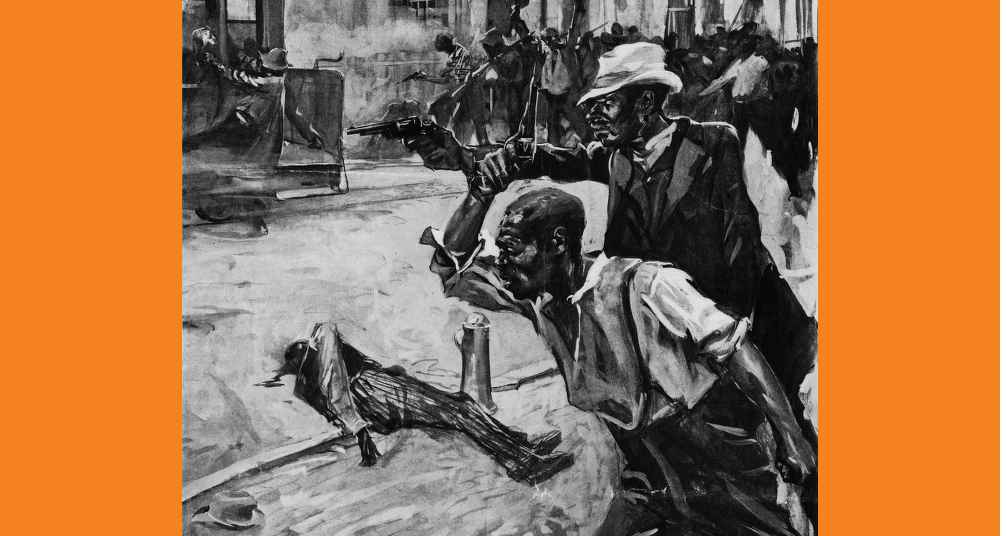White Supremacy and the Dangerous Discourse of Liberal TolerancePosted in Articles, Literary/Artistic Criticism, Media Archive, Politics/Public Policy, Social Justice, United States on 2018-02-15 02:06Z by Steven |
White Supremacy and the Dangerous Discourse of Liberal Tolerance
The Paris Review
2018-02-13
Ismail Muhammad
Oakland, California
 A scene at the race disturbance in Wilmington, North Carolina. Originally published in Colliers Weekly, November 26, 1898. |
Watching Donald Trump speak about the violent white-supremacist rally that took place in Charlottesville last summer was a surreal experience. Not the first press conference where he referred to neo-Nazi protestors as “very fine people.” I mean the second time, when he repudiated those fine people. “Racism,” he intoned, clearly reading from a teleprompter, “is evil … white supremacists and other hate groups are repugnant to everything we hold dear as Americans.” Nobody could mistake his droning boredom for actual investment in the words he was speaking: his attempt to embrace the decorous discourse of liberal tolerance was baldly hypocritical.
As the summer ended and the fall semester began at U.C. Berkeley, where I study literature, far-right agitators descended along with the cool weather. A succession of activists and pundits—Ben Shapiro, Milo Yiannopoulos, and their ilk—made their way to campus. They brought the far-right protestors and threats of violence along with them, all the while invoking the language of tolerance and free speech. Berkeley’s former chancellor Nicholas Dirks even cited the campus community’s “values of tolerance” in defending Yiannopoulos’s appearance. The myriad ways in which people were deploying the word tolerance managed to drain the already-insufficient term of its content. All that was left was am empty concept that could accommodate any agenda. It was more clear than ever that the language of tolerance had become ineffective, just a mask behind which antipluralist demagogues could hide.
Admitting that Trump and the far right are capable of surprising me makes me feel unforgivably naive. At this point, to be surprised feels like a luxury, and I find myself bored with the chorus of outraged liberal critics who sound the alarm every time Trump breaks another democratic norm. But it’s worth inquiring why white supremacy continues to surprise us when white-race hatred is such an intractable aspect of American society. And how our shock perpetuates that violence.
In Charlottesville’s aftermath, I turned to Charles Chesnutt’s 1901 novel, The Marrow of Tradition. In his novel, Chesnutt—an impossibly industrious author, activist, lawyer, and educator—looks back at the wreckage of post-Reconstruction racial politics and attempts to answer these questions via historical fiction. Marrow is, among other things, an examination of how the genteel language of tolerance obscures and enables antiblack violence. In his focus on historical calamity—the Wilmington massacre narrowly and the collapse of Reconstruction more broadly—Chesnutt uses the form of the novel to examine how our shared language reinforces white supremacy’s grip on American society…
Read the entire article here.